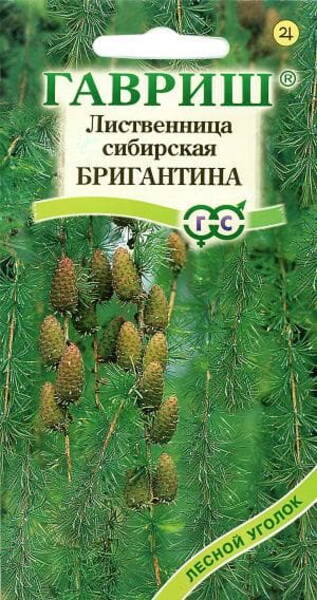Your shopping cart is empty!
Siberian Larch "Brigantina"
Siberian Larch "Brigantina"
Bright autumn outfit of needles!
A powerful tree up to 30 m tall, the crown of a young tree is narrow pyramidal, then becomes oval-rounded. The needles are light green, at the beginning of summer with a bluish bloom, 2.0-4.5 cm long, in bunches, when blooming it has a pleasant aroma.
Sowing is carried out in spring, on a plot prepared in autumn to a depth of 0.5-1.0 cm. Stratification is recommended at 0 + 5 ° C for 20-30 days. After planting the seeds, the ridges are mulched with straw. After the emergence of seedlings, the straw is immediately removed. Newly emerged sprouts need to be protected from the sun for the first time.
Larch should be transplanted to a permanent place as early as possible, the optimal time is at 1-2 years of age.
It is durable, frost-resistant, photophilous, wind-resistant, undemanding to soil and air moisture. It develops quickly on a wide variety of soil types, but prefers those containing lime. It tolerates urban conditions, is resistant to pests and diseases. Propagated by seeds.
The most valuable breed for group, alley and single plantings. Looks great in combination with birches, mountain ash, maples, linden, conifers, junipers, rhododendrons.
Bright autumn outfit of needles!
A powerful tree up to 30 m tall, the crown of a young tree is narrow pyramidal, then becomes oval-rounded. The needles are light green, at the beginning of summer with a bluish bloom, 2.0-4.5 cm long, in bunches, when blooming it has a pleasant aroma.
Sowing is carried out in spring, on a plot prepared in autumn to a depth of 0.5-1.0 cm. Stratification is recommended at 0 + 5 ° C for 20-30 days. After planting the seeds, the ridges are mulched with straw. After the emergence of seedlings, the straw is immediately removed. Newly emerged sprouts need to be protected from the sun for the first time.
Larch should be transplanted to a permanent place as early as possible, the optimal time is at 1-2 years of age.
It is durable, frost-resistant, photophilous, wind-resistant, undemanding to soil and air moisture. It develops quickly on a wide variety of soil types, but prefers those containing lime. It tolerates urban conditions, is resistant to pests and diseases. Propagated by seeds.
The most valuable breed for group, alley and single plantings. Looks great in combination with birches, mountain ash, maples, linden, conifers, junipers, rhododendrons.
Eng.: Siberian Larch. Suom.: Siperianlehtikuusi. Sven.: Sibirisk lärk. Bot.syn.: incl. Larix russica (Endl.) Sabine ex Trautv., Larix sibirica var. altaica Szaf.











